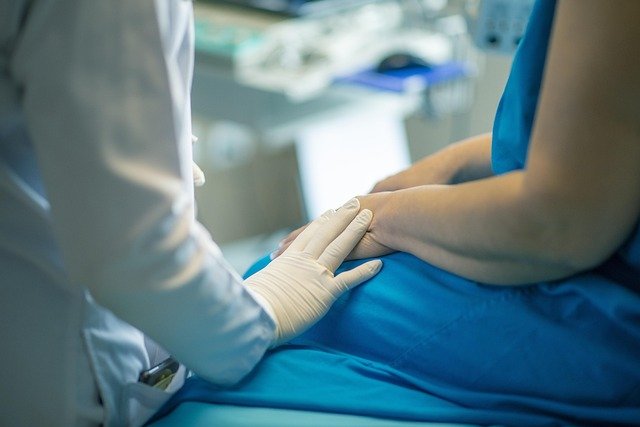Recognizing the Signs: Symptoms of Lymphedema
Lymphedema is a chronic condition that affects millions of people worldwide, yet many individuals remain unaware of its early warning signs until the symptoms become more pronounced. This progressive disorder occurs when the lymphatic system fails to drain lymph fluid properly, leading to swelling and discomfort in affected areas. Understanding the symptoms and recognising them early can make a significant difference in managing the condition effectively and preventing complications. Whether you're at risk due to medical treatments, genetic factors, or other health conditions, knowing what to look for is crucial for timely intervention and improved quality of life.

What Are the Common Symptoms of Lymphedema
The common symptoms of lymphedema typically develop gradually and can vary significantly between individuals. The most recognisable sign is persistent swelling, usually beginning in the fingers, toes, hands, or feet before progressing to larger areas of the arm or leg. This swelling, known as oedema, often feels firm or rubbery to the touch and may create an indentation when pressed.
Early symptoms include a feeling of heaviness or tightness in the affected limb, even when no visible swelling is present. Many people describe this sensation as wearing tight clothing or jewellery that becomes increasingly uncomfortable throughout the day. The skin may appear slightly puffy or feel thicker than usual, and some individuals notice their clothes or shoes fitting more snugly on one side of the body.
As the condition progresses, the swelling becomes more apparent and may be accompanied by recurring infections, skin changes, and decreased mobility. The affected area might develop a leathery texture, and small bumps or warty growths may appear on the skin’s surface. Pain, whilst not always present, can occur and typically manifests as aching or burning sensations.
Who Are the High-Risk Groups for Developing Lymphedema
High-risk groups for developing lymphedema include individuals who have undergone cancer treatments, particularly those involving lymph node removal or radiation therapy. Breast cancer survivors represent one of the largest at-risk populations, with studies indicating that up to 20% may develop lymphedema following treatment. Similarly, those treated for melanoma, gynaecological cancers, prostate cancer, and head and neck cancers face elevated risks.
People born with primary lymphedema, a hereditary condition affecting the lymphatic system’s development, constitute another high-risk group. This form typically manifests during infancy, adolescence, or early adulthood and affects women more frequently than men.
Individuals with certain medical conditions also face increased susceptibility. These include those with venous insufficiency, heart failure, kidney disease, and severe obesity. Age is another factor, as the lymphatic system’s efficiency naturally decreases over time, making older adults more vulnerable to developing secondary lymphedema.
Other risk factors include prolonged periods of immobility, recurrent skin infections, and trauma to areas with compromised lymphatic drainage. Air travel and extreme temperatures can sometimes trigger symptoms in susceptible individuals, though these typically represent temporary flare-ups rather than permanent onset.
Understanding the Progression and Stages of Lymphedema Symptoms
Progression and stages of lymphedema symptoms follow a predictable pattern that healthcare professionals use to assess severity and determine appropriate treatment approaches. Stage 0, also called the subclinical stage, involves no visible swelling despite impaired lymphatic function. Individuals may experience subtle sensations of heaviness or tightness, but standard measurements reveal no significant changes.
Stage 1 lymphedema presents with mild, soft swelling that typically reduces with elevation and rest overnight. The skin maintains its normal texture and colour, and pressing the area leaves a temporary indentation called pitting. At this stage, the condition often responds well to conservative management techniques.
Stage 2 marks a significant progression where swelling becomes persistent and no longer reduces completely with elevation. The tissue feels firmer, and pitting becomes less pronounced or absent entirely. Skin changes may begin to appear, including increased thickness and recurring infections becoming more common.
Stage 3, the most severe form, involves significant swelling with hardened tissue and dramatic skin changes. The affected limb may become severely enlarged and deformed, with deep skin folds and warty growths. Mobility becomes substantially impaired, and the risk of serious complications, including cellulitis and lymphangitis, increases considerably.
Early intervention remains crucial regardless of the stage, as prompt treatment can slow progression and improve outcomes significantly.
Treatment Options and Associated Costs
Lymphedema treatment costs in the UK vary considerably depending on the approach and provider. NHS services typically cover basic treatments, though waiting times may extend several months for specialist appointments. Private treatment options offer more immediate access but involve significant out-of-pocket expenses.
| Treatment Type | Provider Options | Typical Cost Range |
|---|---|---|
| Manual Lymphatic Drainage | NHS/Private Physiotherapy | £0-80 per session |
| Compression Garments | NHS Prescription/Private | £50-300 per garment |
| Pneumatic Compression Devices | Private Purchase/Rental | £1,500-4,000 |
| Complete Decongestive Therapy | Private Lymphedema Clinics | £2,000-5,000 per course |
Prices, rates, or cost estimates mentioned in this article are based on the latest available information but may change over time. Independent research is advised before making financial decisions.
When to Seek Professional Help
Recognising when to seek professional evaluation is essential for preventing lymphedema progression. Immediate medical attention is warranted if you notice persistent swelling that doesn’t resolve with elevation, particularly following cancer treatment or surgery involving lymph nodes.
Early consultation becomes crucial when experiencing recurring skin infections, sudden increases in limb size, or development of skin changes such as hardening, discolouration, or unusual growths. Even subtle symptoms like persistent heaviness, tightness, or changes in how clothing fits should prompt discussion with healthcare providers, especially for individuals in high-risk categories.
Understanding the symptoms of lymphedema empowers individuals to seek timely treatment and maintain better long-term outcomes. Early recognition combined with appropriate medical intervention can significantly slow progression and improve quality of life for those affected by this chronic condition.
This article is for informational purposes only and should not be considered medical advice. Please consult a qualified healthcare professional for personalized guidance and treatment.




